Reading is both an art and a science in so many ways. Once young readers move on from word recognition to reading for meaning, a whole new world opens up. Reading comprehension activities within the ELA block help students develop skills that will deepen the meaning of literature, while also leading to an understanding of material in other subjects. As students learn to make connections within a text, lifelong reading skills are born and cultivated. Check out these ELA anchor charts to help your students analyze the many elements necessary for reading success.
1. Questions To Ask While Reading
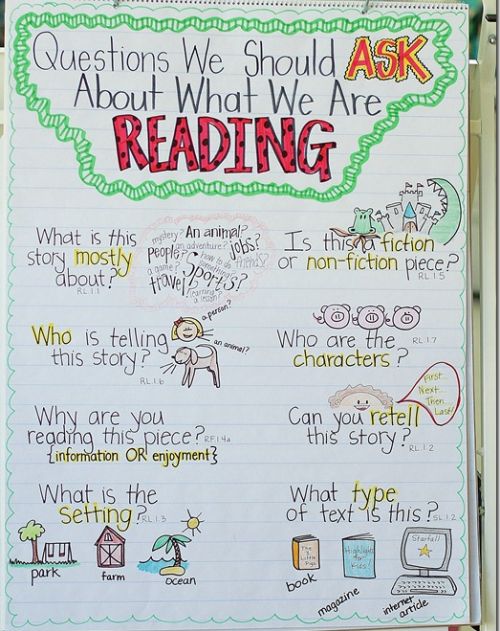
Questions like these help students think about the purpose of reading itself. They also encourage kids to consider important basics, like setting and characters.
2. Story Elements
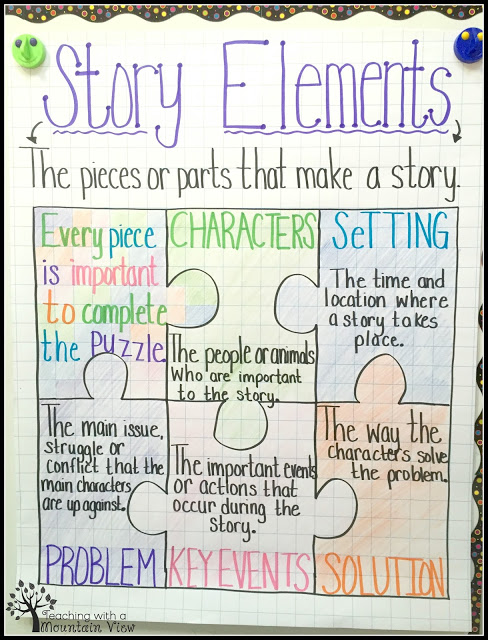
Going over the key components that make up a story will make your students better readers. They’ll know exactly what to look out for, and searching for these pieces will make reading seem like a fun scavenger hunt.
3. Read, Cover, Remember, Retell
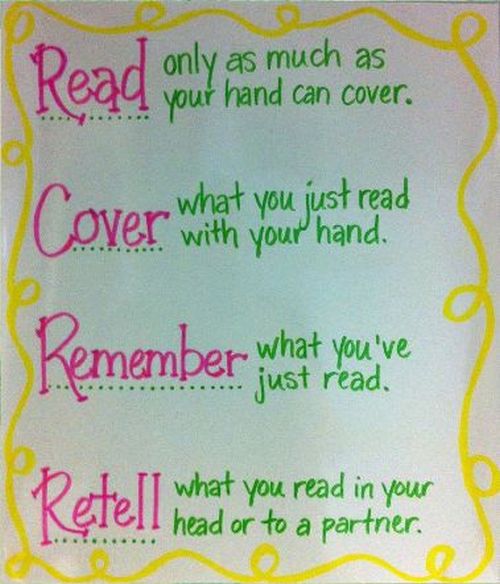
Stop students from skimming longer texts with this concept. This way, they’ll break the text into bite-sized chunks and truly understand what they’re reading.
4. Making Predictions
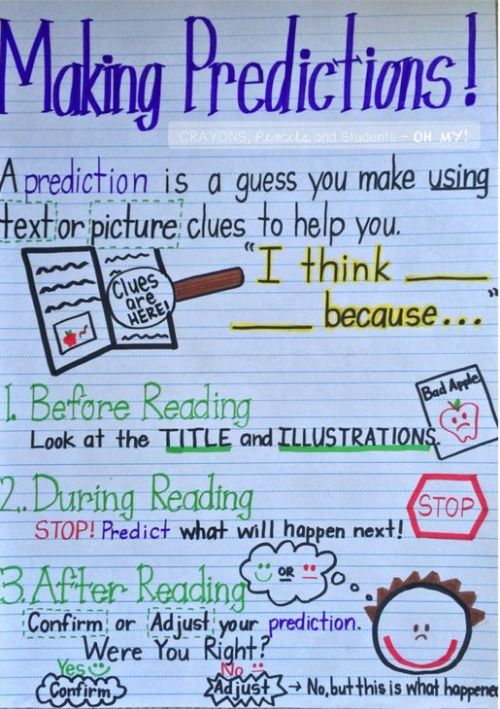
Making predictions is a great way for students to interact with a text. Just introduce them to these three simple steps and watch them succeed!
5. Beginning, Middle, End
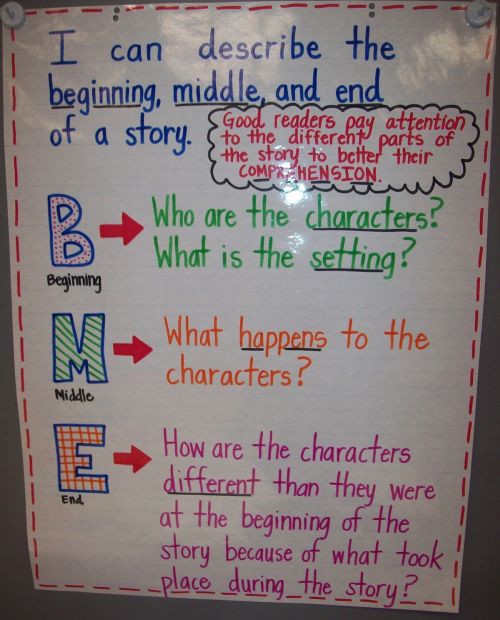
Have students look for growth throughout a story by paying attention to the beginning, middle, and end. They should think about where the characters start, what happens to them, and how they’re different at the end.
6. Choosing a Just-Right Book
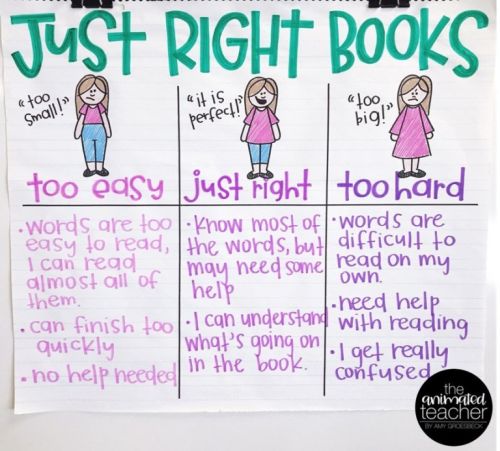
Comprehension is deeply connected to children’s current reading abilities, and knowing how to choose a just-right book can help them gain confidence in their skills.
7. Summary Sentences

Make sense of more complicated passages by writing summary sentences for each paragraph or section on sticky notes. They’ll be helpful when reviewing for tests or writing a paper.
8. Monitoring for Meaning
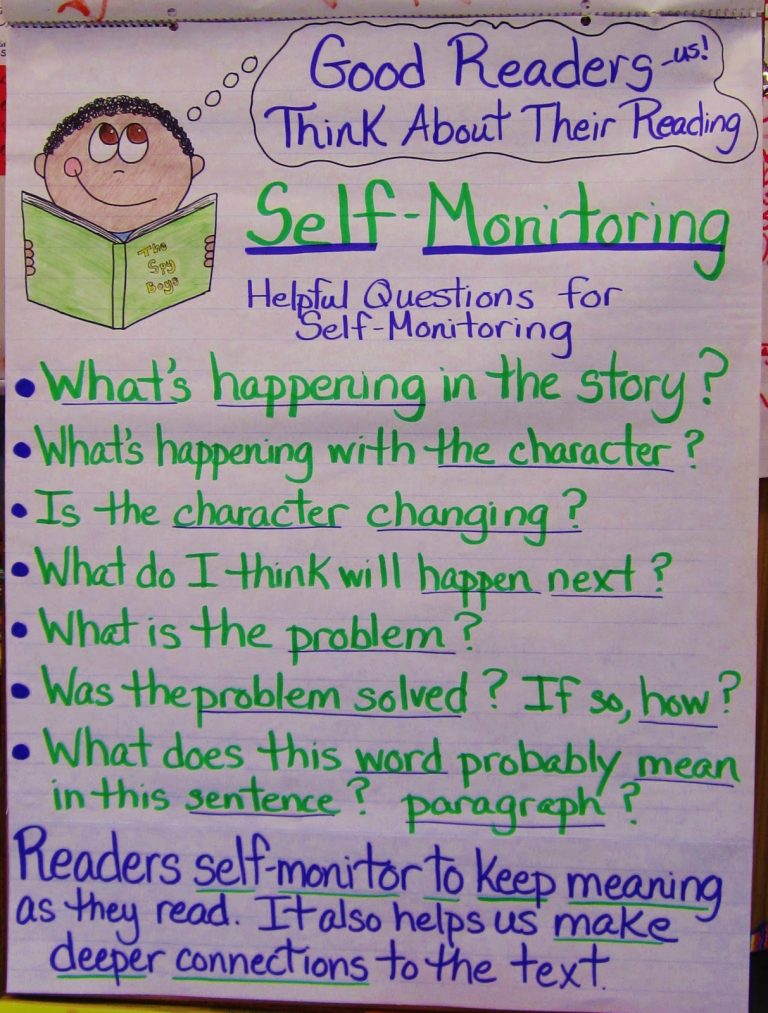
Self-monitoring is key for success in reading comprehension at all levels. Giving students some questions to ask themselves as they read is a great first step toward understanding.
9. UNWRAP
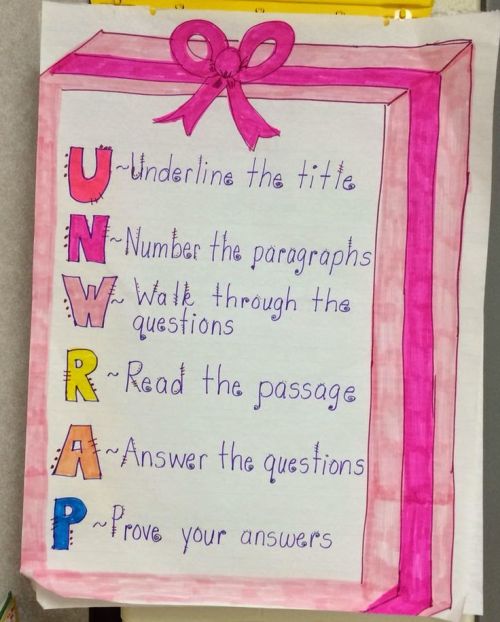
Use the UNWRAP method to guide students through a thorough reading. This is an especially valuable technique for nonfiction passages.
10. Understanding What Reading Looks Like
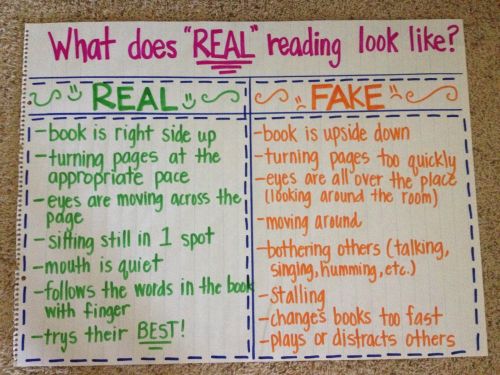
Setting expectations for what reading really looks like can help lay the groundwork for comprehension, as illustrated in this reading anchor chart.
11. Literary Elements
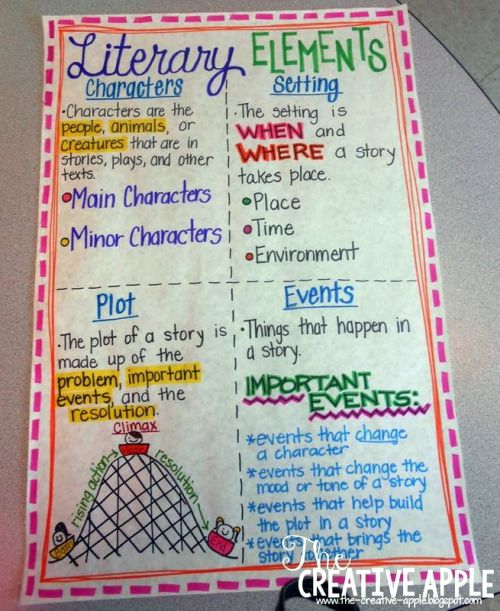
This is like combining four anchor charts for reading comprehension into one! It’s the kind of chart that kids can refer to over and over.
12. How To Mark a Text
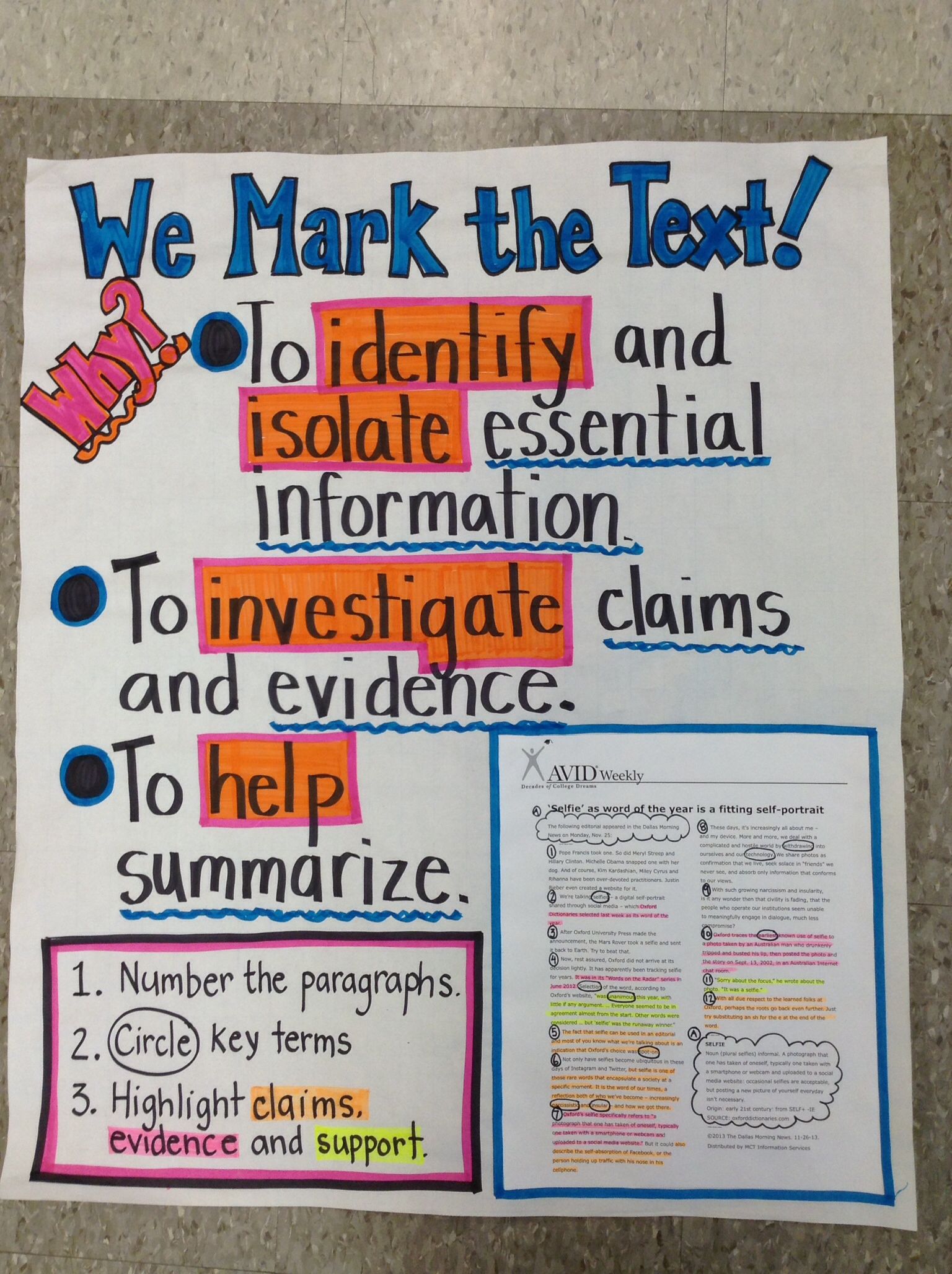
Use an anchor chart and strategy like this one to teach your students how to properly mark up texts. Afterward, have a group discussion and ask students to utilize the sections they emphasized in their texts to support their individual points.
13. Cause and Effect
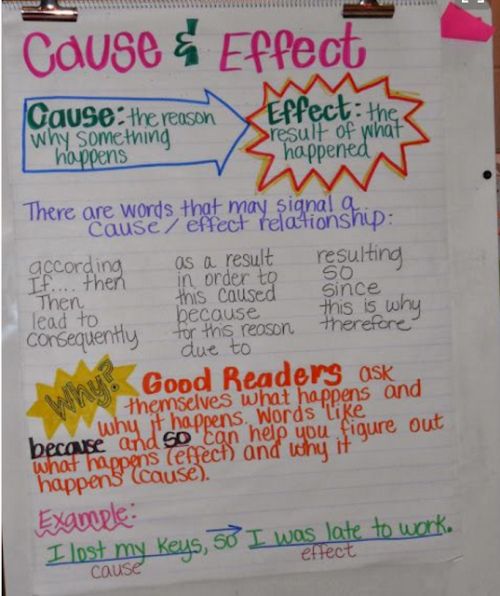
Considering cause and effect is an excellent way to improve reading comprehension. Students learn to watch for words like “because” and “so” with this anchor chart.
14. Decoding Tricky Words
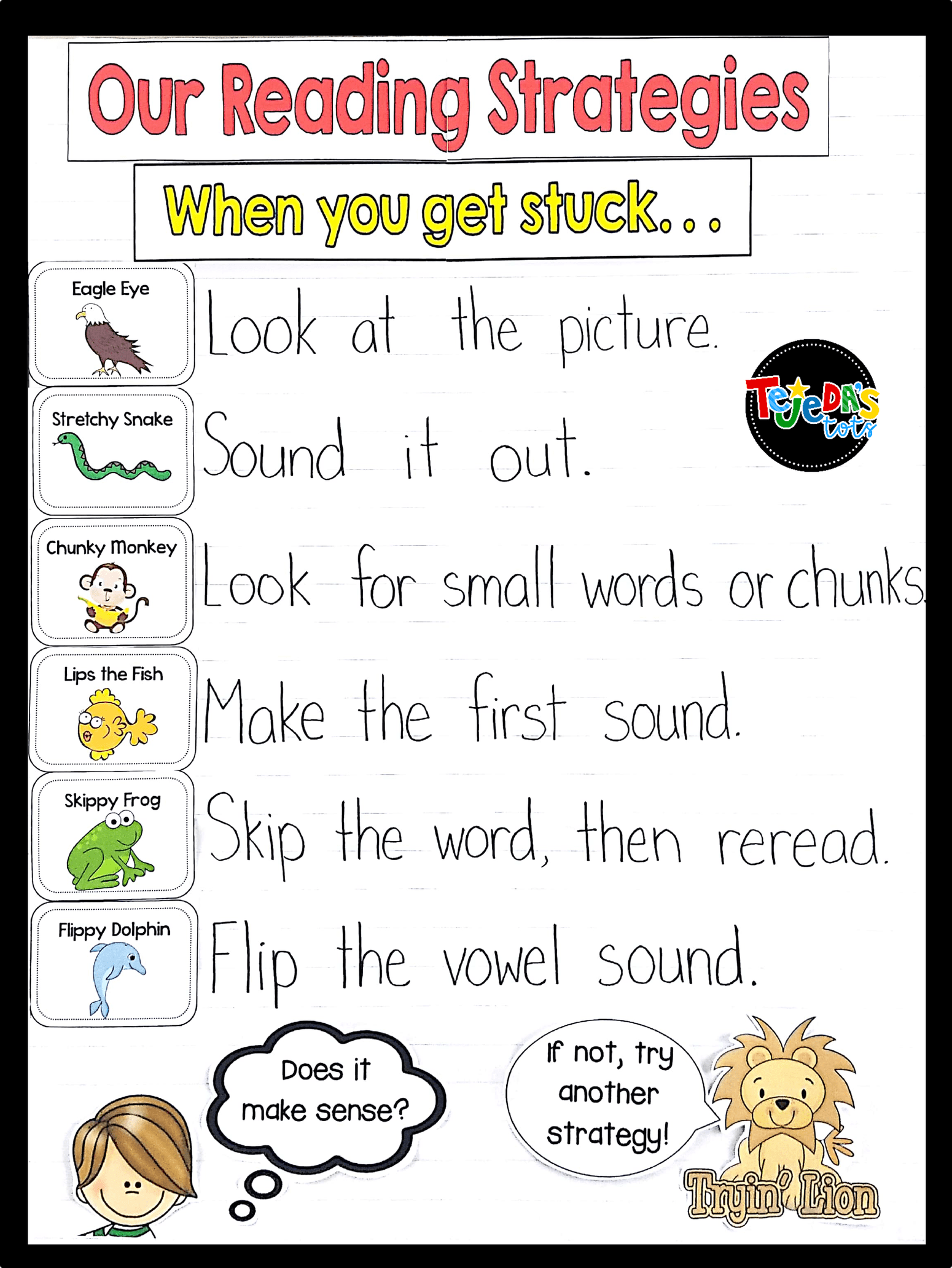
Decoding strategies help students step back from a frustrating word or sentence and revisit it from another angle. Especially when they’re just starting out, your class (and their parents) will appreciate having access to these tips.
15. Coding Thoughts
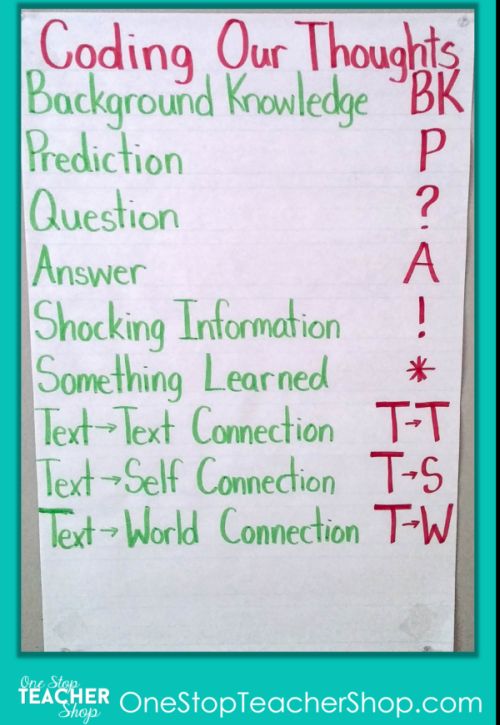
Shortcut symbols allow students to annotate texts without slowing down or interrupting the reading flow. Be sure to teach them how and when to use each symbol as they read.
16. Using Context Clues
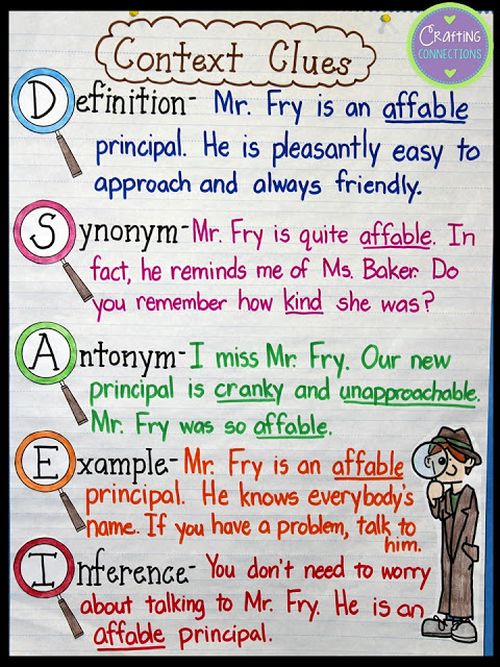
This anchor chart for reading helps students use context clues, such as synonyms and word parts, to become “word detectives” when they stumble upon a word they don’t know.
17. Types of Conflict
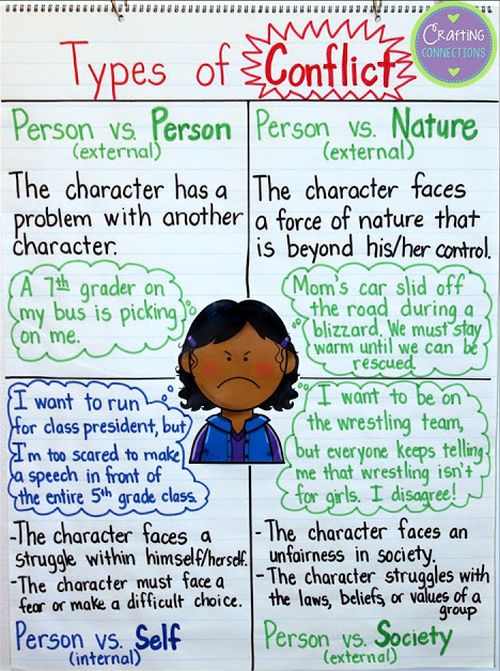
Dig deeper into characters by understanding the conflict they face during the story. Remind students that more than one of these often applies.
18. Nonfiction Text Features
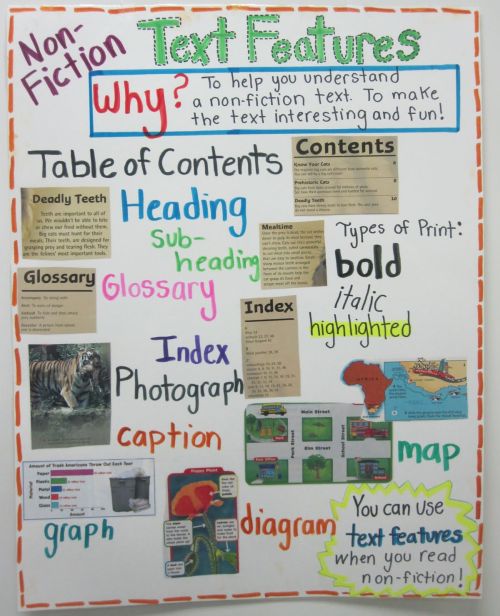
If you’re doing a nonfiction unit, consider creating an anchor chart as a guide. It can be difficult for some students to understand the differences between fiction and nonfiction, but a chart like this one will immediately orient them within a text.
19. Visualizing as They Read
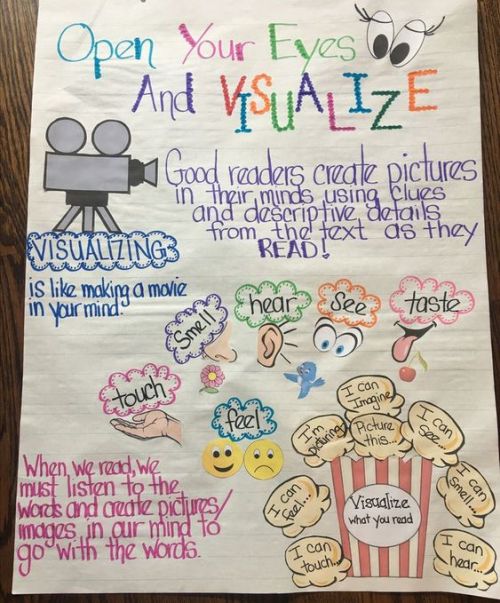
Visualizing is an important part of achieving reading comprehension. Get kids to see the “movie in their minds” as they read.
20. Figurative Language
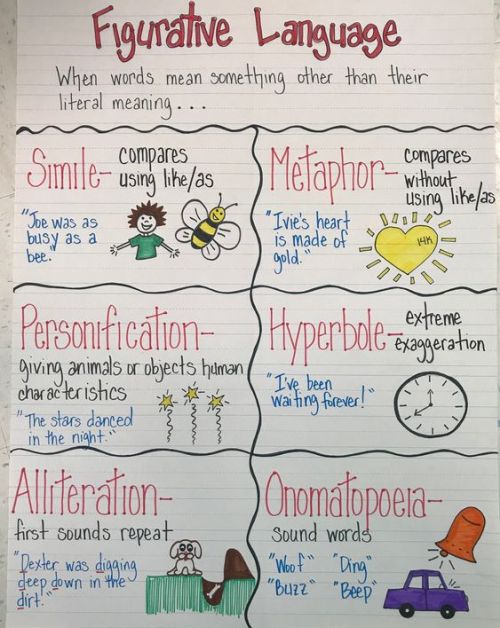
Figurative language can be challenging to teach. Make it easier with this anchor chart and a few pieces of text to act as examples. Then, set your students free and see how many elements of figurative language they can find in their individually chosen books.
21. Building Fluency

Fluency is another important part of reading comprehension. When students are robotic in their reading expression and pacing, they have trouble understanding meaning.
22. Overcome Distractions
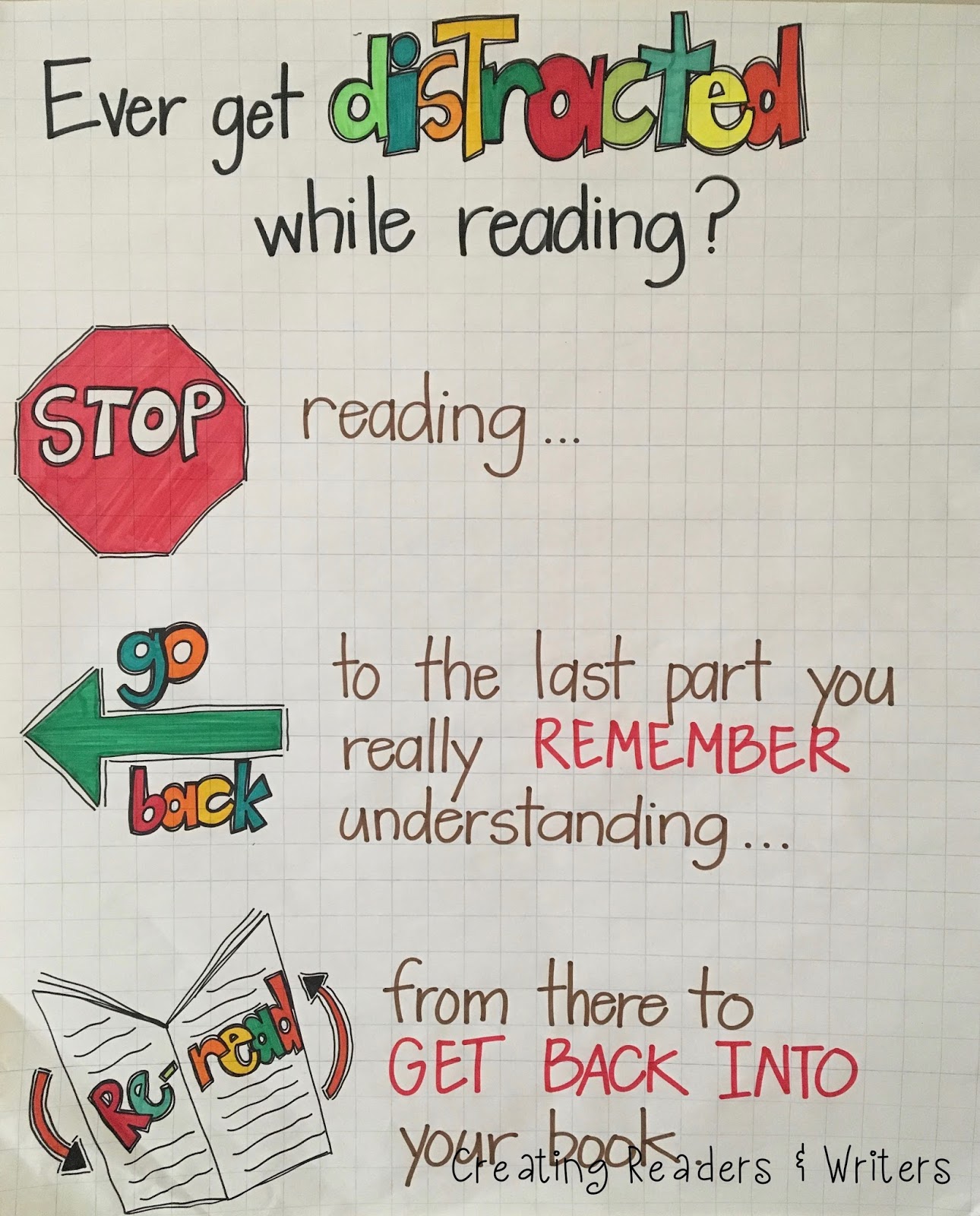
Even the best readers sometimes have trouble focusing on their books! Make your students more effective readers by going over how to overcome wandering thoughts.
23. Retelling the Story
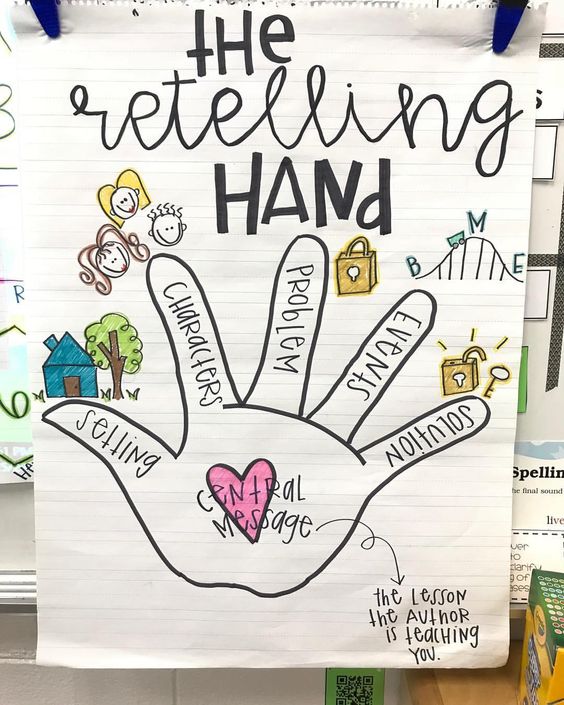
Retelling or summarizing is an important check on comprehension—can the student identify the main events and characters of the story? Reading anchor charts like this one lend a hand in explaining the concept.
24. Find the Main Idea
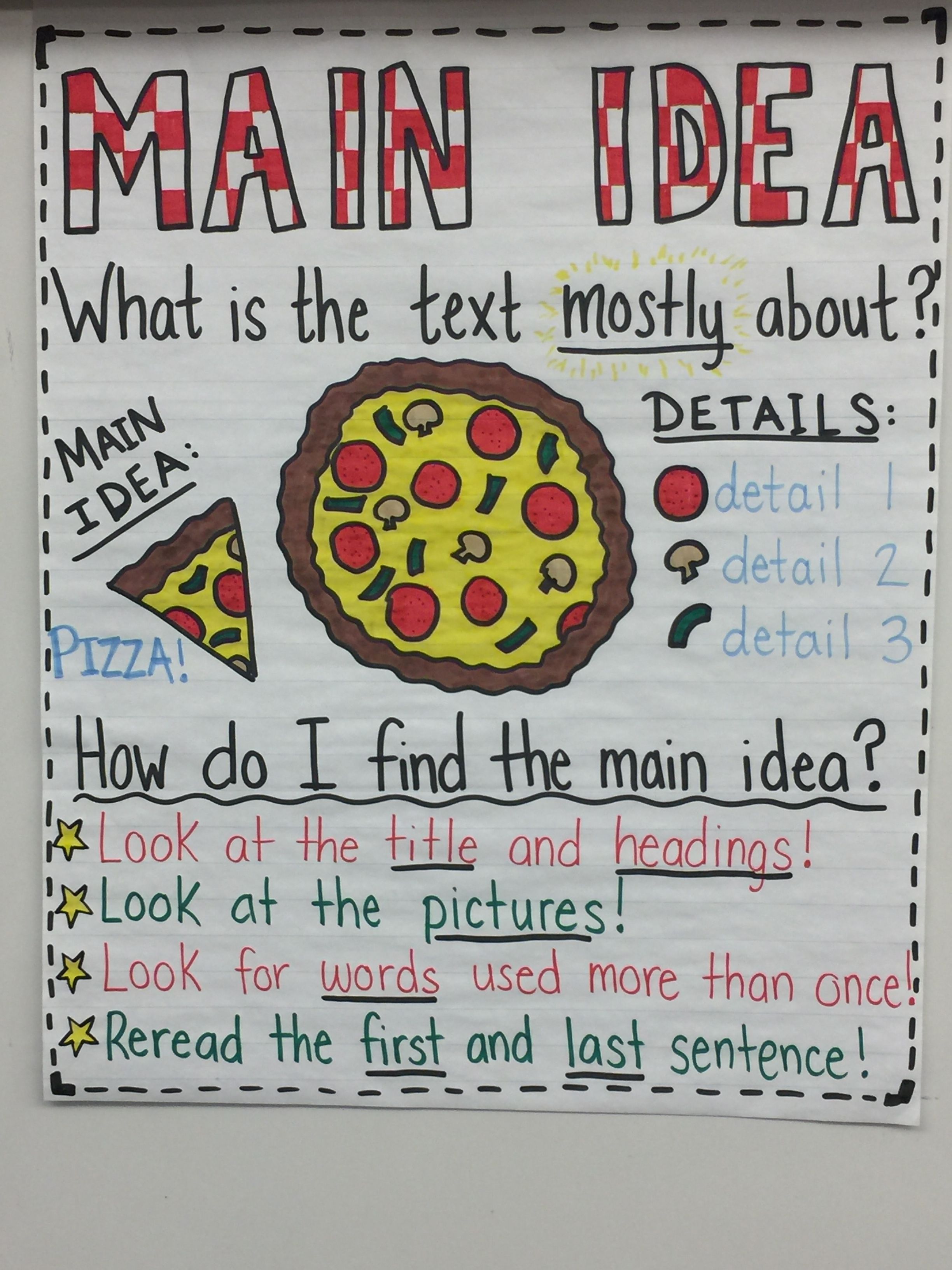
Understanding the main idea, or identifying what the text is mostly about, even if it’s not explicitly stated, is one of the first higher-level tasks of reading comprehension.
25. Understanding Character
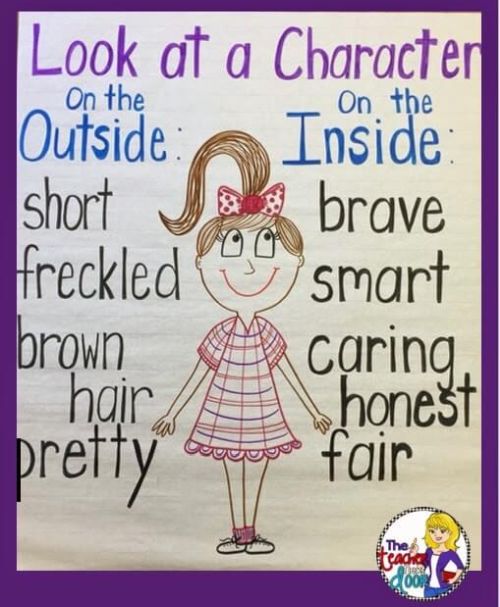
Ask students to distinguish between what’s on a character’s outside versus a character’s inside to help them understand the text.
26. Setting
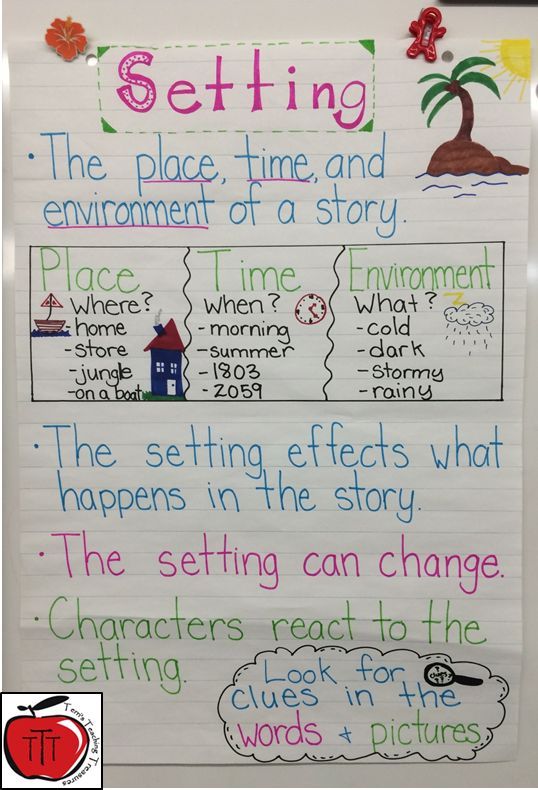
A story’s setting is made up of more than just where it takes place. Help your students fully grasp everything the concept encompasses with a fun and simple visual.
27. Point of View
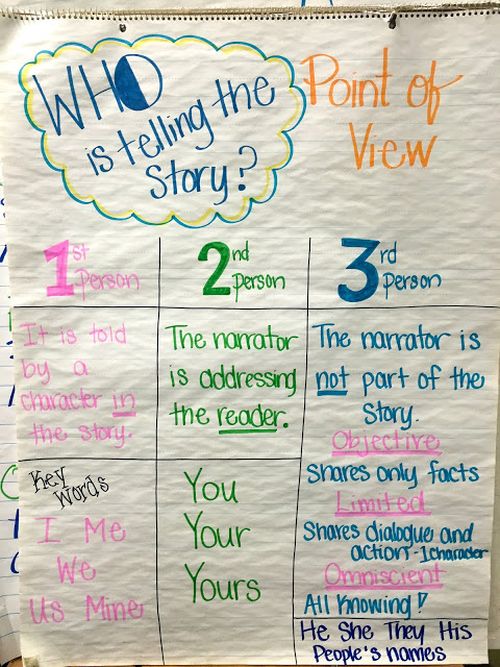
Understanding point of view in a story can be challenging for beginning readers. This chart will help them pick it up and then implement it in their own writing too.
28. Theme vs. Main Idea
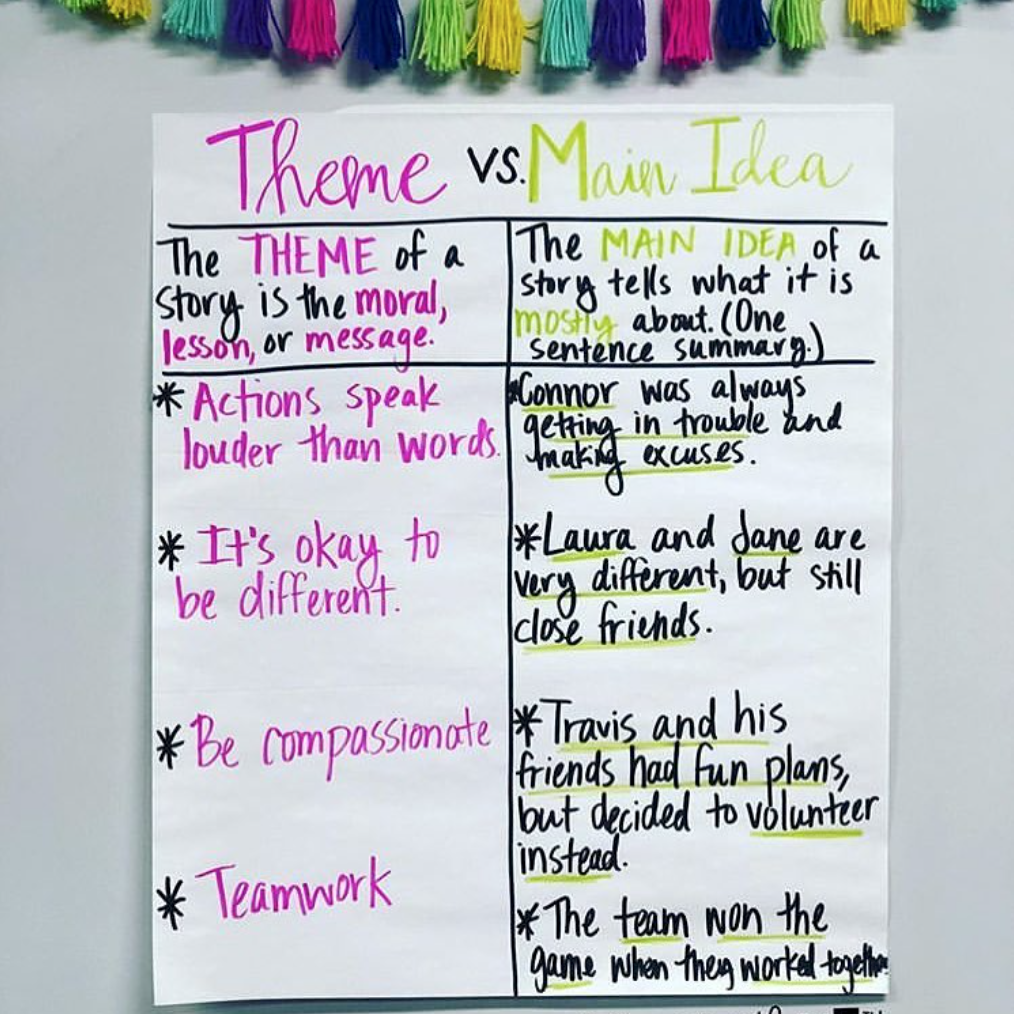
It’s so easy for young readers to confuse the theme of a text with its main idea, which is why comparing the two concepts side by side is sure to set up your students for success.
29. Thin and Thick Questions
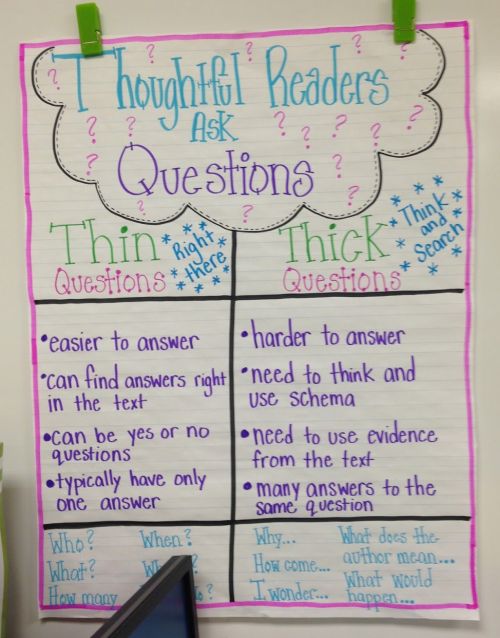
Teach your students the difference between basic yes-or-no (thin) questions and more involved (thick) questions. When students can answer harder questions about the story, their level of understanding will go through the roof.
30. Making Connections

You can be sure kids comprehend what they read when they can start connecting it to themselves and to the world around them.
31. Reading Conference Guidelines
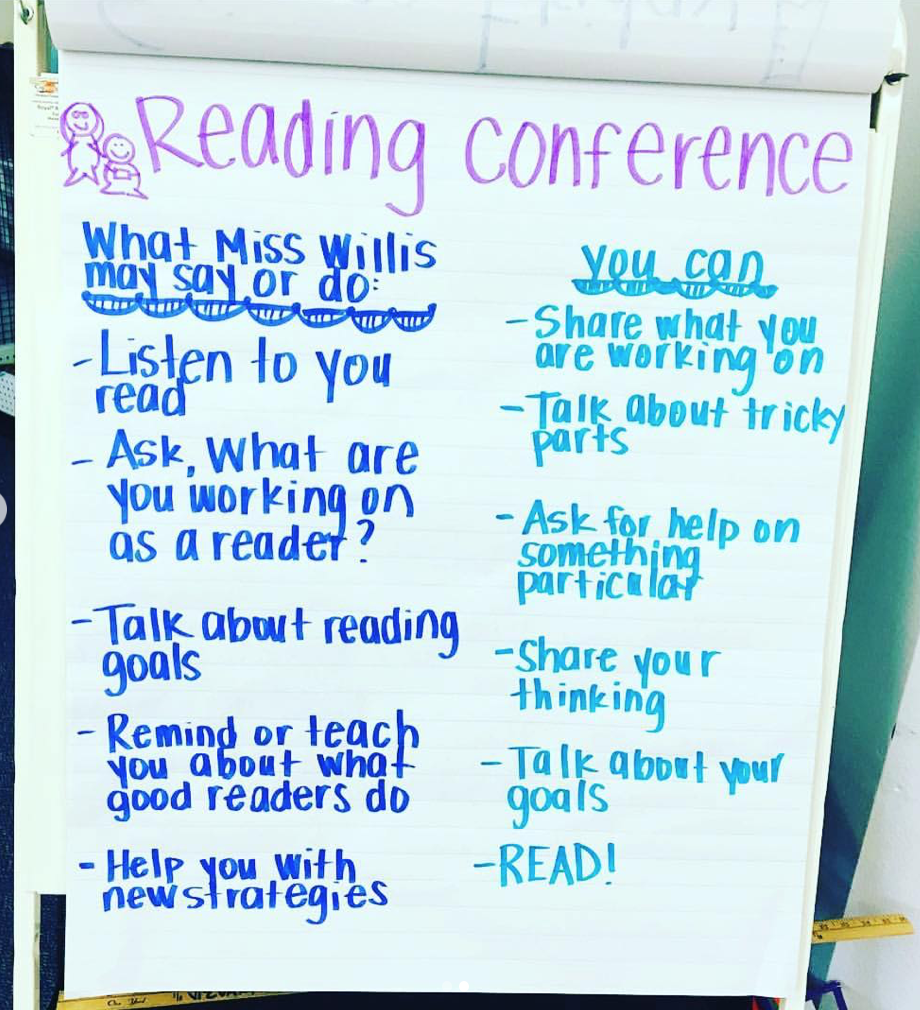
Implementing one-on-one student-teacher conferences during individual reading time can be really helpful for students, especially when you set expectations and guidelines ahead of time. This will give your students time to think about what they will focus on during their time with you and how it will help them become better readers.
32. Plot Structure
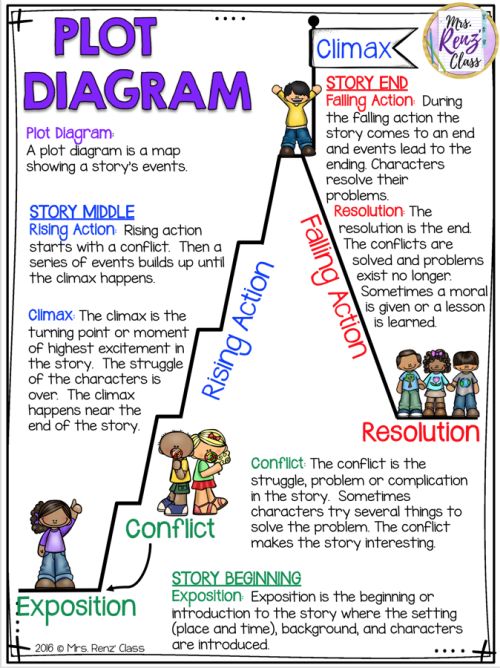
This basic plot anchor chart can help students understand the rising action, climax, and falling action that make up a plot.
33. Making Inferences
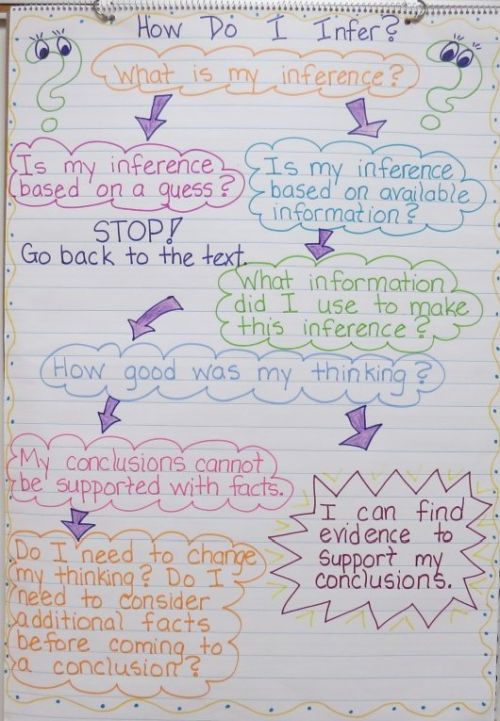
To make an inference, students have to differentiate between what’s being said on the page and what’s not. This anchor chart does a great job of explaining.
34. Writing a Book Review
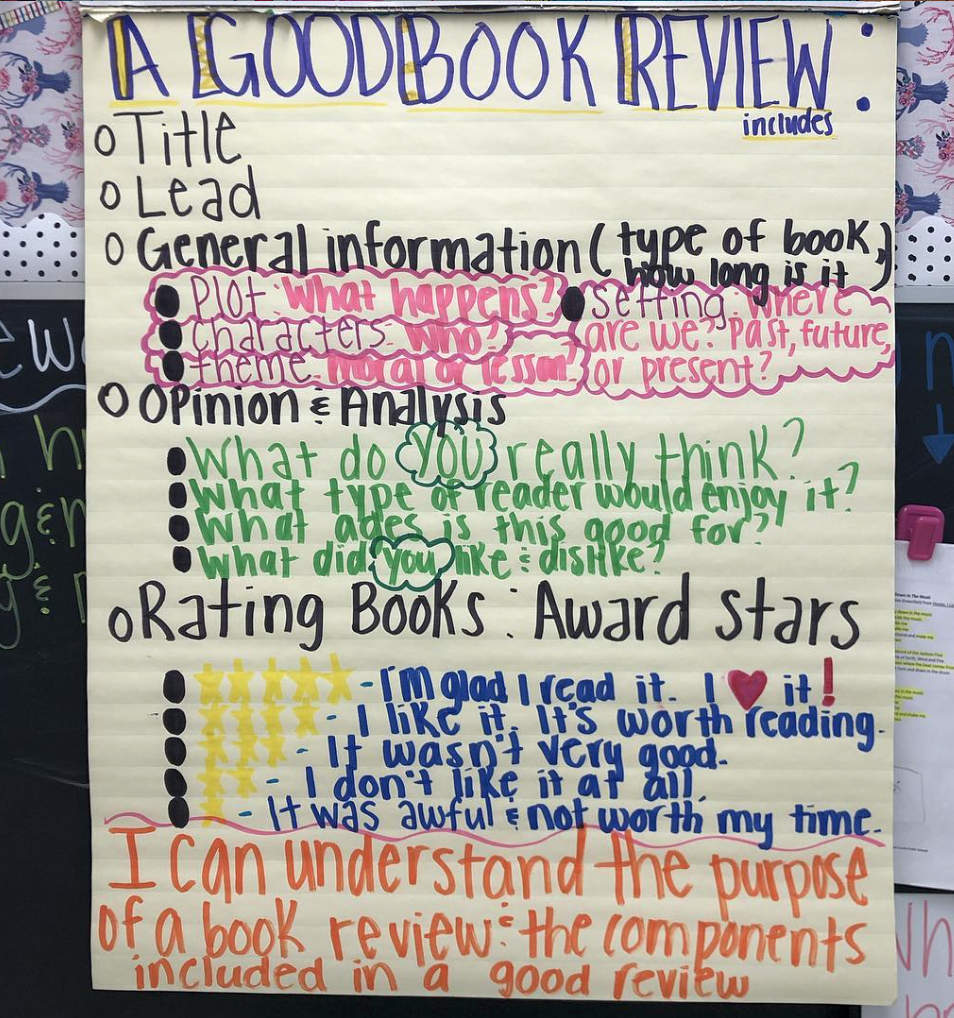
The key to writing a successful book review is being aware of what to focus on during the reading stage. If you plan on having your students write a book review, go over what they should take notes on or pay close attention to while they are reading with an easy anchor chart like this one.
35. Inference Thinking Stems
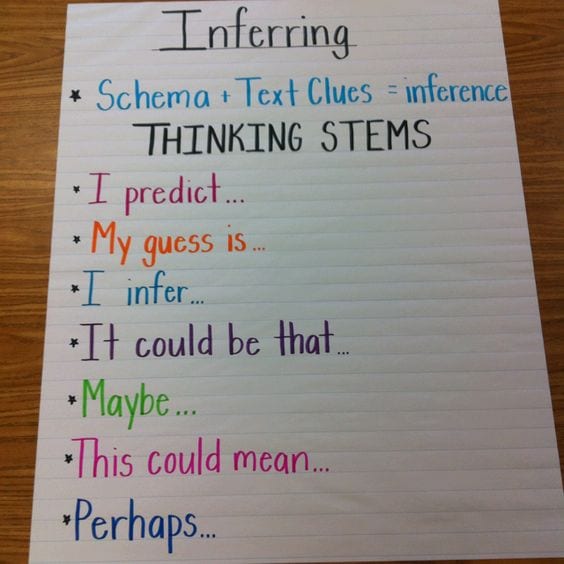
Reading is an active endeavor; readers often make predictions based on what they already know. These thinking stems can help students put their ideas about stories into words.
36. Evidence-Based Reading
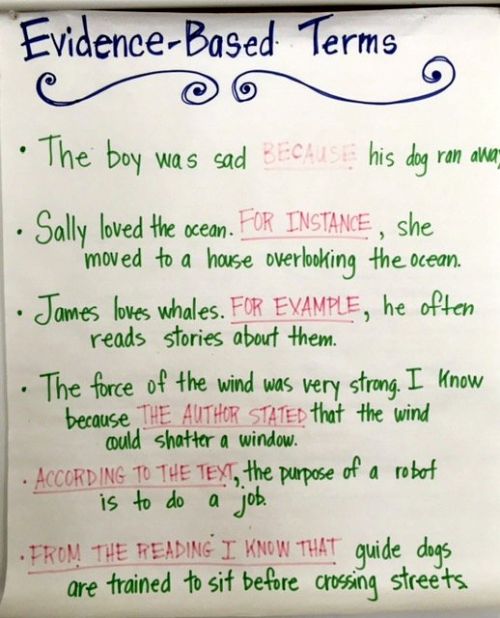
Students show they understand what they are reading by pointing to evidence within the reading. These words are the key to finding those bits of evidence.
37. Elements of Poetry
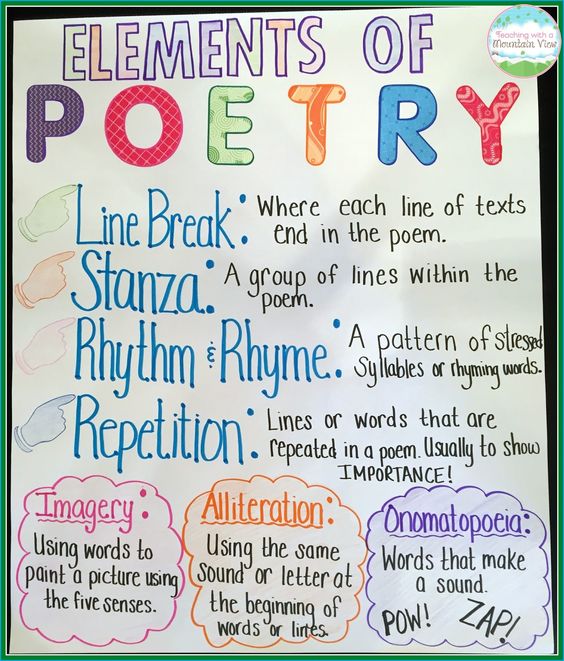
Poetry is tricky and reads a lot differently than most other texts students tend to gravitate toward. Nevertheless, it’s an important art form to explore in the classroom—so why not use a pretty anchor chart as a primer? We guarantee it will take the fear out of reading poetry.
38. Author’s Purpose
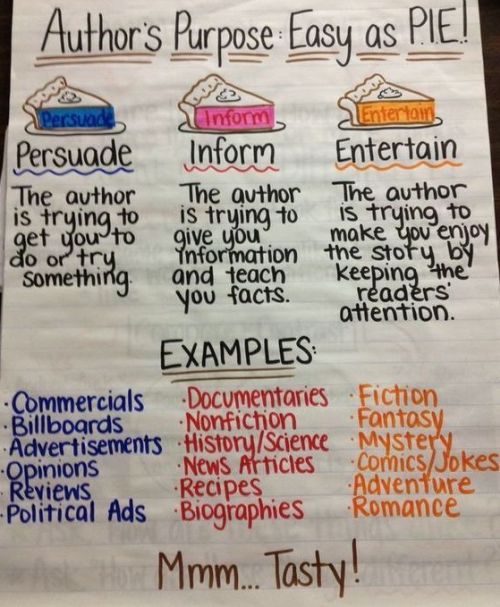
Why did the author write this book? Was it to persuade, inform, or entertain? The author’s purpose may dictate how students read an article or story, and this chart helps students identify it.
39. Questions and Answers
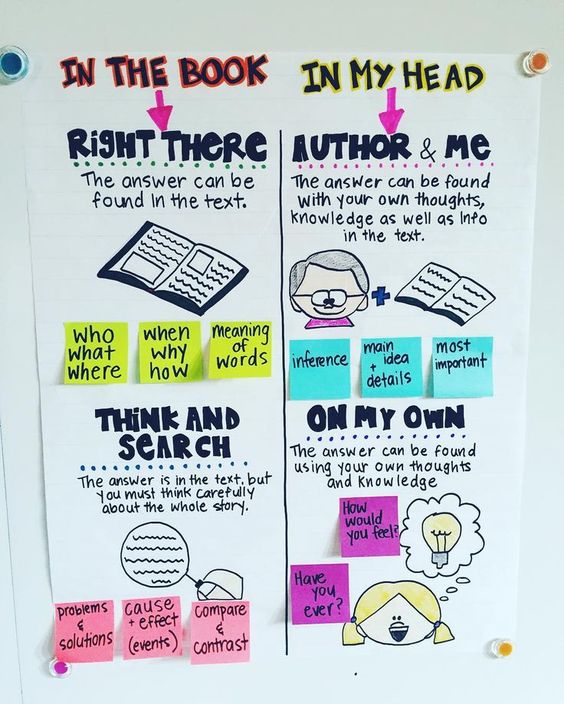
If your class is struggling with how to find answers to questions while reading, this anchor chart just might help them.
40. Themes in Literature

Another great way to teach theme. Books are like a cream-filled cupcake: You never know what’s hiding inside!
41. Vowel Teams
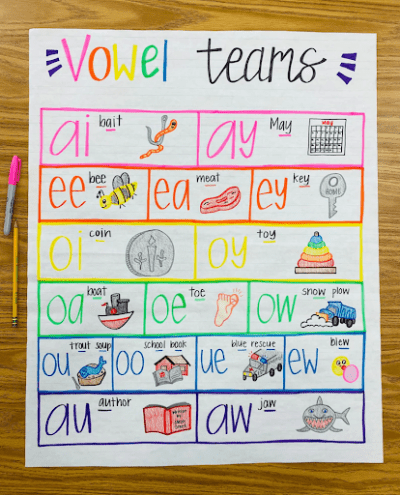
Vowel teams can be confusing for young readers. This chart color-codes each vowel team and incorporates example words with pictures to help students remember these tricky sounds.
42. Stop and Jot
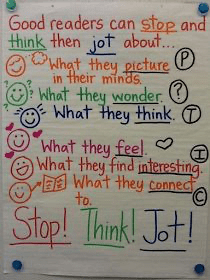
It is always a good idea to have students write about their reading in a Reader’s Notebook so they can look back on their thoughts. Anchor charts for reading like this one remind students of great reasons to stop, think, and jot while reading.
43. Using Think Marks to Dig Deeper
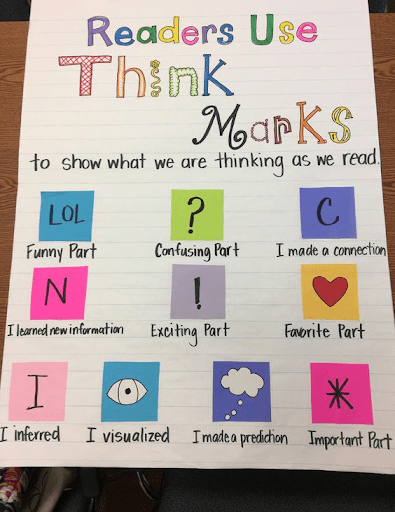
Some students are great at remembering to stop and jot as they read, while others are more reluctant. Motivate your students by incorporating these fun symbols that can be placed on sticky notes throughout a text.
44. Thinking Questions To Ask While Reading
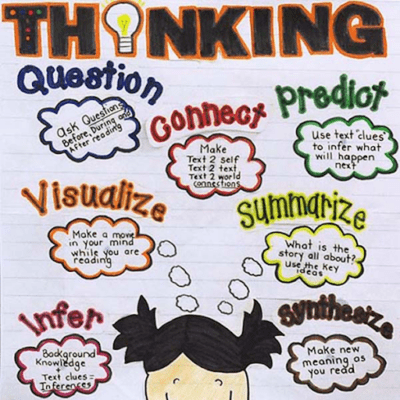
Use this chart to help students apply higher-order reading comprehension strategies as they read independently. These also make great conversation starters for whole- and small-group activities.
45. Understanding Why Readers Close-Read
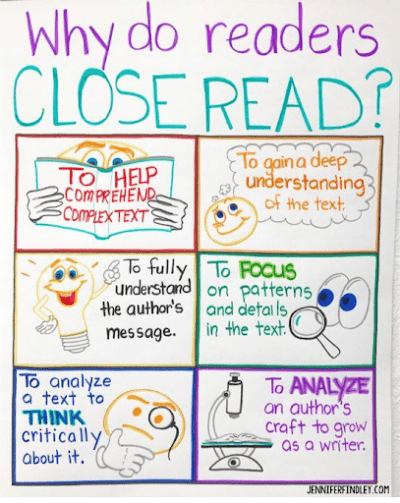
Close reading helps students dig deeper as they read to better understand the text. Give them the background knowledge on this strategy to help motivate them to take a closer look.
46. Steps to Close Reading

Your students will become expert reading detectives with these helpful close-reading tips you can put on anchor charts.
47. Tone and Mood
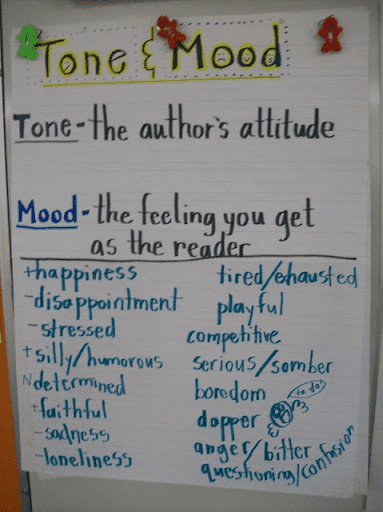
As students think about their feelings while reading a particular piece, they will learn to build their own opinions of literature and poetry. Help them understand how the author’s tone also has an impact by using these anchor charts for reading.
48. Reading Comprehension Strategies Summed Up
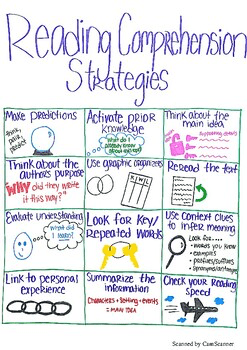
This is an excellent summary of multiple reading comprehension strategies used in the classroom all year long. It works well across most grade levels too.
49. ELA Test-Taking Strategies
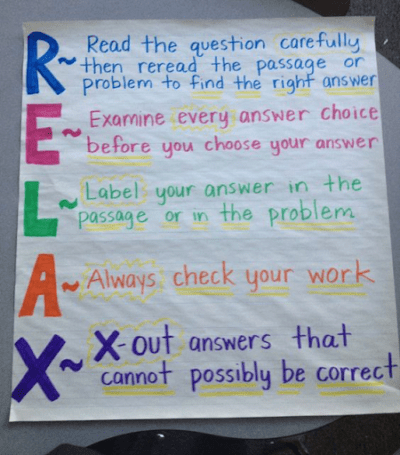
Help ease the pressure of test taking with these practical reminders. These great tips are well suited for ELA and beyond!

